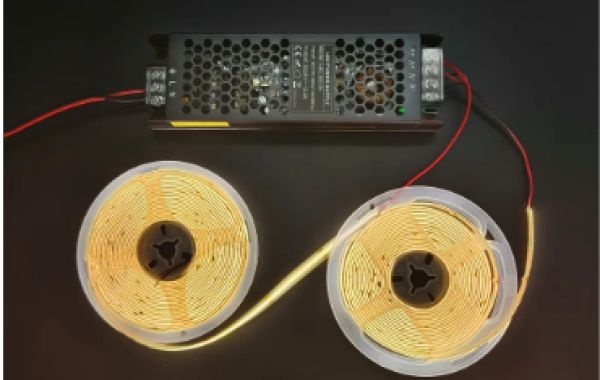Introduction
LED strip lights have become a staple in modern lighting—valued for their flexibility, energy efficiency, and wide range of applications. Whether used in residential, commercial, or industrial settings, demand for LED strip lighting continues to rise globally. But with so many suppliers in the market, finding the right one can be challenging. Choosing a reliable LED strip lights supplier is critical to ensuring consistent product quality, on-time delivery, and long-term business success. This guide outlines the key factors you should consider when evaluating potential suppliers.
Understand Your Requirements
Before searching for a supplier, it’s important to define what exactly you need. Are you sourcing LED strip lights for home improvement, retail displays, outdoor architecture, or smart home integration? Each use case may require specific features—such as brightness levels (lumens), waterproofing (IP ratings), voltage (12V, 24V), or color options like RGB, RGBW, or tunable white. Knowing your technical specifications and order volume (small batch vs. bulk) will help you filter out suppliers that cannot meet your needs.
Check Product Quality and Certification
Product quality is one of the most critical factors when choosing a supplier. High-quality LED strip lights use reputable chips (like Epistar, Cree, or Samsung), robust PCBs, strong adhesive backings, and reliable power supplies. Always ask for product samples and technical datasheets to verify what you’re getting. Also, make sure the supplier complies with international standards. Look for certifications like CE (Europe), RoHS (environmental safety), UL (U.S.), FCC (for electrical devices), and ISO (quality management). These certifications not only ensure product safety but also confirm the supplier’s legitimacy.
Evaluate Customization Capabilities
A top-tier supplier should be flexible enough to offer customized solutions. If you need your own branding, look for suppliers that offer OEM (Original Equipment Manufacturer) services. If you need tailored features like custom lengths, dimmable functions, smart controls, or specific packaging, ODM (Original Design Manufacturer) capabilities are essential. The ability to customize product specifications shows that the supplier is experienced and committed to supporting different business models.
Review Manufacturing Experience and Reputation
Working with an experienced LED strip lights supplier reduces the risk of delays and defects. Check how long the company has been in business and whether they have a proven track record with international clients. Positive online reviews, testimonials, and case studies are valuable indicators of reliability. It also helps to choose suppliers who regularly participate in global trade shows or industry expos, as these events often showcase credible and innovative manufacturers.
Verify Supply Chain and Logistics Capabilities
No matter how good the product is, poor logistics can lead to costly delays. A capable supplier should have the infrastructure to handle bulk orders and meet tight deadlines. They should also be familiar with international shipping regulations and documentation, including customs clearance and export declarations. Ask about lead times, shipping options (air or sea freight), and whether they provide tracking for your orders. Some suppliers even offer warehousing services or local partnerships to streamline delivery.
Assess Customer Support and Communication
A reliable supplier isn’t just about the product—they should also provide excellent customer service. Quick, clear communication is essential when working across time zones or handling large orders. Check if they assign a dedicated account manager or offer multilingual support. A professional team should be available to answer technical questions, provide post-sale assistance, and resolve any issues efficiently. Good customer service ensures a smoother buying process and builds long-term trust.
Compare Pricing and Payment Terms
While pricing is a major consideration, it should never come at the expense of quality. Get detailed quotes from multiple suppliers and compare the value you’re receiving—not just the numbers. Consider the quality of materials, warranty coverage, and service support included in the cost. Also, review the supplier’s payment terms, such as minimum order quantities (MOQs), deposit requirements, and refund or credit policies. A flexible and transparent pricing model is usually a good sign of professionalism.
Look for Long-Term Partnership Potential
The best suppliers aren’t just vendors—they’re long-term partners in your business growth. Choose a supplier that understands your goals, adapts to your changing needs, and invests in continuous improvement. A manufacturer or wholesaler who regularly upgrades their technology, introduces new products, or offers training materials is more likely to support you as your business evolves. Strong partnerships can lead to better pricing, priority service, and even collaborative product development.
Conclusion
Choosing the right LED strip lights supplier involves more than just picking the lowest price. It requires a careful evaluation of product quality, customization capabilities, certifications, logistics, and support services. By taking the time to research and communicate with potential suppliers, you can build a lasting relationship that ensures consistent supply, reliable performance, and better outcomes for your customers. Start with small trial orders, ask for certifications, and assess how well a supplier aligns with your business needs before scaling up. The right supplier will not only deliver great products—but also peace of mind.








